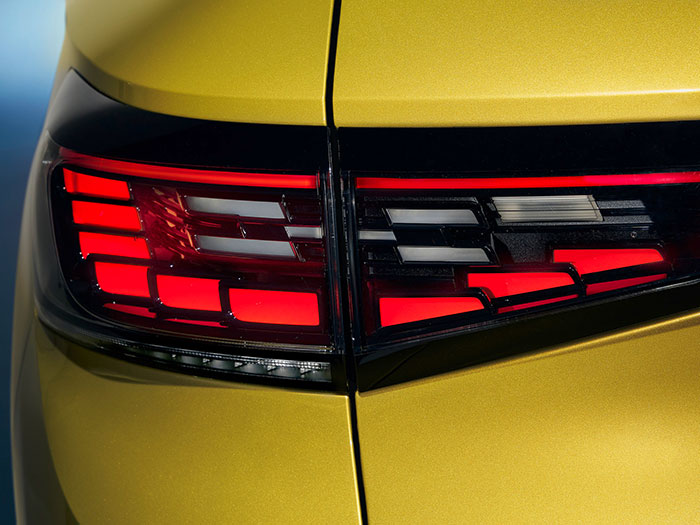Light design: a glimpse of the future of electric mobility
The ID.4, Volkswagen’s first fully electric SUV, has an elegant and dynamic – but at the same time lightweight – design. The innovative use of lighting, an integral design feature for electric vehicles, has been crucial in achieving the end result.
Given its unique features, such as a compact engine and the presence of the battery pack in the vehicle floor, electric mobility will drive a revolution in car design.
But trends are also changing when it comes to the details. Where designers once used chrome to highlight certain parts of a car’s exterior and interior, for several years they have been moving towards light elements in the vehicle’s internal design and the outside of the vehicle.
Light as energy
“Light is the new chrome and plays a major role, especially for an electric vehicle. It represents energy and electricity, but also warmth and safety. Light is a perfect symbol for the mobility of the future,” explains Klaus Zyciora, Volkswagen Group Head of Design, who was behind the recently presented ID.4 project.
Zyciora and his team applied this philosophy to the ID.4, creating a new, unmistakeable light design. Large headlights – featuring LED technology as standard – give the front end a friendly look. The tail light clusters are also LED with a red light strip connecting them to each other. The exterior mirror housings feature an additional light element: they conceal logo projectors which project the ID. logo onto the ground upon opening the doors.
IQ.Light LED Matrix

But that’s not all. You can also choose IQ.Light with LED matrix headlights for the ID.4 with light modules made up of eleven individual LEDs each, which can be individually switched off and dimmed. They emit an intelligently controlled, continuous main beam, always illuminating the road as brightly as possible without dazzling other road users.
The IQ.Light modules bear a strong resemblance to human eyes. Illuminated rings with a flattened lower section surround them and feature the ID. logo. Honeycomb-shaped openings in the modules’ housings and all-round fibre optic cables generate the daytime running light. When the lighting is on, a light strip runs across the front end to link the headlights to each other.
The ID.4 welcome
The modules communicate with the driver even before a journey: whenever someone approaches the vehicle with the key, the lights electrically swivel upwards from the bottom to welcome them by looking up.
With the Keyless Advanced access system on board, the vehicle features an enhanced welcome scenario: in this case, the light modules “open their eyes” and swivel to the side – giving the impression that the vehicle is seeking eye contact with the approaching driver.
3D LED

The ID.4 is also the very first Volkswagen to use 3D LED tail light clusters, which form a flat curve and have a particularly homogeneous and vivid effect. Nine fibre optic cable surfaces emit the light in an unusually rich red. Each of these discs, consisting of several, thin layers, appears to be floating in front of a black background.
The brake lights, meanwhile, light up in the shape of an “X”, while dynamic turn indicators move from the inside towards the outside to clearly convey in which direction the vehicle is heading. Zyciora adds that “the light in the ID.4 is not an end in itself. It fulfils vital functions in an intelligent way and represents an integral element of the exterior design.”
The electric future
Electric mobility is at the heart of the Volkswagen Group strategy with large investments in e-mobility planned, which will go towards developing new models, infrastructure and converting production sites.
The Zwickau site in Germany is Europe’s largest electric vehicle plant in Europe. The ID.4 is built here, as well as in the Chinese plants of Anting and Foshan, where pre-production has started, and in 2022 it will also roll off the production line in Chattanooga in the USA.
Source: Volkswagen Newsroom
